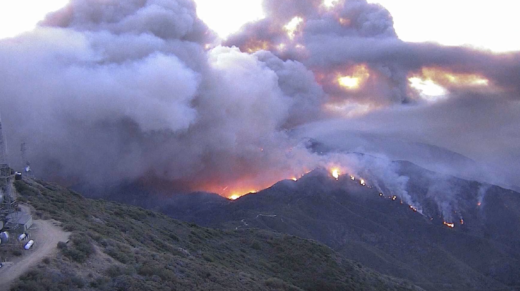“If we were to have a major wildfire, it could impact the water supply for 600,000 people,” says Barry Dugan, senior programs specialist with the Sonoma County Water Agency.
Two cameras have already been installed in the area — one on Mount Konocti and one on Pine Mountain. (You can see their live feeds here.) According to Dugan, Cal Fire is already using them to help suppress fires.
“Knowledge is power and you can use that to make better decisions in these disasters,” says Driscoll. “The cameras are not going to stop the fires, but it’s going to improve our ability to respond to them.”
Sonoma County plans to install the rest of the cameras by the end of September. Dugan says that the project was an easy sell.
“We got many lives and millions of dollars in the catastrophic fires last year,” he says. “I don’t think that there’s any question that these cameras are a good investment.”
In the long term, Dugan hopes to work with surrounding areas including Napa, Marin, Mendocino and Lake counties, to expand the network up to 25 cameras. He hopes the funding will partly come from a FEMA hazard mitigation grant.
Driscoll, who has been working on deploying these camera systems around the west coast, says that that the cameras can be a key source of information for firefighters.
“When a 911 call comes in, we can then verify if there is a fire, we can scale up or down our response to that fire and as the firefighters are driving to the location, they can look at the fire and see how it’s progressing,” he says.
During a fire, firefighters have the ability to control the cameras to get a better look. The live footage can also be viewed by anyone in the public on the Alert Wildfire website.
According to Driscoll, we’ve entered a new phase of high risk of devastating wildfires. The cameras give first responders a tool that can help them make life-or-death decisions.
“There is an escalating fire threat. It’s a moving target. It’s changing in front of our eyes,” says Driscoll. “We’ve developed this system to try to outsmart disasters.”

